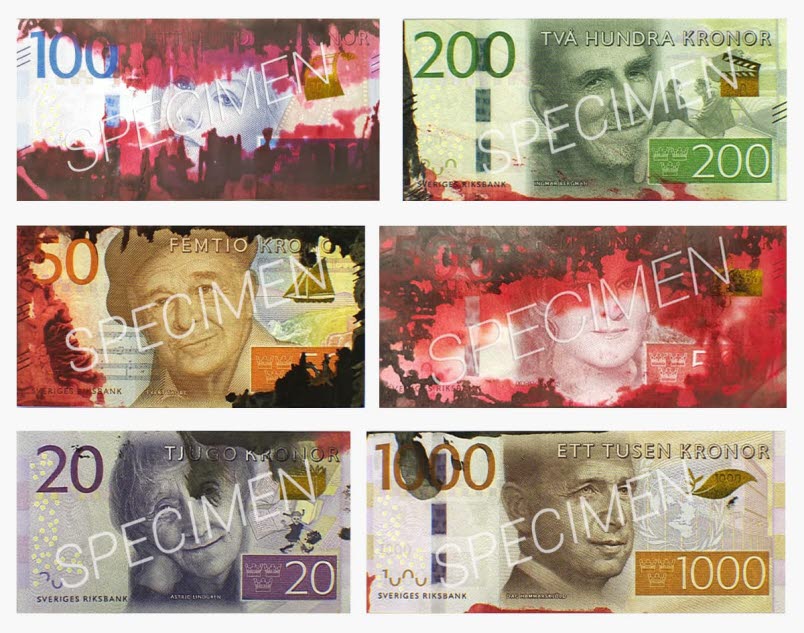Security ink dyed banknotes
A person stealing banknotes from, for instance, a security transport should not be able to use the notes. This is why banknotes are packed together with dye packs which will discharge in the event of an attack, discolouring the banknotes so that they can no longer be used as a means of payment. You should therefore refuse to accept a banknote that is discoloured.
Several different colours of dye are used: black, pink, purple, green, red and blue, as well as combinations of these colours. The amount of dye can vary and may also have faded, for example if the banknote has been washed, which leads to other nuances. Discolouration can occur on any part of the banknote, but is most often found along the edges.
Some examples of discoloured banknotes are shown below

If a banknote has burnt areas or edges, this may be a sign that it is stolen. It is therefore important to be extra vigilant when parts of a banknote have been cut or torn off. This could indicate an attempt to remove dye stains in order to try to redeem the note. There are also frequent cases where the dye has been painted over to disguise the discolouration.
Banknotes that are discoloured by dye may also have been washed which means that both the dye and the note itself may have more or less faded.
If you have a discoloured banknote
A banknote that is discoloured with security dye cannot be redeemed. If, on the other hand, the banknote is discoloured by something other than security dye, you can replace it at a bank. Read more about stained and discoloured banknotes under the heading Redeeming damaged and discoloured banknotes.
Do you have any questions?
Contact the Riksbank's office, telephone: + 46-8-787 00 00.
Thanks for your feedback!
Your comment could not be sent, please try again later

Questions? Visit our FAQ on kundo.se (opens i new window).